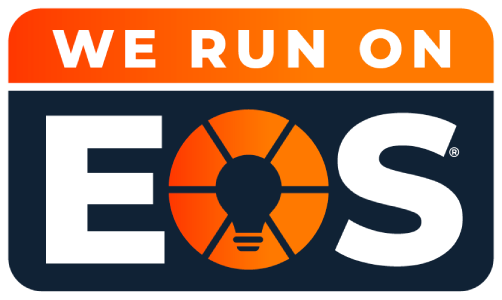The Entrepreneurial Operating System (EOS) is a dynamic framework designed to streamline operations, foster growth, and cultivate organizational success. At its core, EOS encapsulates a set of guiding principles and practices that empower businesses to achieve their full potential. From establishing clear visions to executing strategies with precision, EOS provides a blueprint for sustainable success in today’s competitive landscape.
Retaining top talent is not just a priority, but a necessity in EOS organizations. These individuals are the driving force behind the company’s values and vision, propelling innovation, productivity, and ultimately, profitability. In a landscape where talent is a scarce resource, retaining top performers is not just essential—it’s a strategic imperative for maintaining momentum and sustaining growth.
This article is a call to action for leaders and HR professionals in EOS organizations. It delves into the imperative of talent retention and explores strategies that extend beyond the traditional onboarding process. By examining innovative approaches and best practices, we aim to empower you with actionable insights to cultivate a culture of engagement, loyalty, and longevity among your workforce. Join us as we embark on a journey to unlock the secrets of talent retention in the realm of EOS.
Understanding EOS Organizations
The Entrepreneurial Operating System (EOS) represents a holistic approach to business management, encompassing a comprehensive set of principles and practices to drive organizational success. At its essence, EOS emphasizes simplicity, clarity, and focus, providing a framework for aligning people, processes, and strategies toward a common goal.
Key Principles of EOS
EOS is built upon six fundamental components that form the bedrock of its organizational framework:
- Vision: Establishing a clear, compelling vision that inspires and guides every organization member.
- People: Surrounding oneself with the right people, ensuring alignment with the company’s values and goals.
- Data: Leveraging data-driven insights to inform decision-making and drive continuous improvement.
- Issues: Proactively identifying and addressing obstacles and challenges to foster growth and resilience.
- Process: Implementing effective processes and systems to streamline operations and enhance efficiency.
- Traction: Executing with discipline and accountability to achieve measurable results and realize the organization’s vision.
Characteristics of Top Talent in EOS Organizations
Top talent within EOS organizations will embody several key characteristics:
- Alignment: They are deeply aligned with the company’s vision, values, and goals, contributing to a culture of purpose and unity.
- Adaptability: The right talent will possess the flexibility and resilience to navigate challenges and capitalize on opportunities in a rapidly evolving landscape.
- Accountability: EOS employees hold themselves and others accountable for results, driving excellence and performance across the organization.
- Collaboration: Top talent fosters a collaborative environment where teamwork, communication, and innovation thrive, propelling the organization forward.
- Continuous Improvement: EOS framework employees are committed to personal and professional growth, embracing feedback and learning opportunities to continually enhance their skills and capabilities.
Challenges in Retaining Top Talent in EOS Environments
In EOS environments, retaining top talent can present significant challenges despite the framework’s benefits. For example, in a competitive market, rival organizations often seek to poach top talent. Additionally, the fast-paced nature of EOS operations can result in burnout and dissatisfaction among employees, impacting retention.
Misalignment between individual goals and organizational vision can also prompt talent to seek opportunities elsewhere. Furthermore, the absence of clear career development paths may drive skilled employees to pursue growth elsewhere.
To address these challenges, EOS organizations must adopt proactive talent management strategies. This involves prioritizing work-life balance, fostering alignment with organizational values, and providing clear pathways for career advancement. By understanding and actively addressing these retention challenges, EOS organizations can create an environment where top talent feels valued, supported, and motivated to contribute their best, driving sustained success.
Understanding and addressing these challenges is essential for EOS organizations to cultivate a culture of retention and sustain long-term success.
The Role of Onboarding in Talent Retention
Effective onboarding processes play a pivotal role in talent retention within EOS organizations. They serve as the initial point of contact for new hires, setting the tone for their entire employee experience. By providing a structured and immersive introduction to the company culture, values, and expectations, onboarding fosters a sense of belonging, engagement, and commitment among employees, which is crucial for their long-term retention.
- Engagement and Productivity: Well-designed onboarding programs help new hires acclimate to their roles more quickly, making them productive contributors to the organization’s success.
- Retention and Loyalty: Employees who experience a positive onboarding experience are more likely to feel connected to the organization and remain committed for the long term.
- Cultural Integration: Onboarding facilitates the integration of new employees into the company culture, promoting alignment with core values and fostering a sense of belonging.
- Early Feedback and Support: During onboarding, new hires receive early feedback and support, setting the stage for ongoing development and success in their roles.
Onboarding Practices in EOS Organizations
In EOS organizations, effective onboarding practices serve as the cornerstone for integrating new hires into the company culture and setting the stage for their success. From aligning newcomers with EOS core values to providing comprehensive training, onboarding practices in these organizations are meticulously designed to ensure a seamless transition for employees.
- EOS organizations often conduct orientation sessions to introduce new hires to the company’s history, mission, and values and provide context for their role.
- Pairing new hires with experienced employees as mentors or buddies helps facilitate social integration, knowledge sharing, and support during onboarding.
- Onboarding in EOS organizations typically includes training sessions to familiarize new hires with essential tools, processes, and systems required for their roles.
- Setting clear expectations and goals for new hires from the outset helps align their efforts with organizational objectives and promotes accountability.

Limitations of Traditional Onboarding in Talent Retention
While traditional onboarding processes can be effective, they may also have limitations that hinder talent retention within EOS-focused organizations:
- Lack of Personalization: One-size-fits-all onboarding programs may fail to address individual employees’ unique needs and preferences, leading to disengagement and dissatisfaction.
- Short-Term Focus: Traditional onboarding often focuses on short-term orientation rather than long-term integration and development, missing opportunities to foster lasting connections and loyalty.
- Insufficient Feedback Mechanisms: Without ongoing feedback mechanisms, traditional onboarding may fail to identify and address early signs of dissatisfaction or disengagement among new hires.
- Limited Integration with Culture and Values: Onboarding programs that solely focus on technical training may neglect the crucial aspect of cultural integration, resulting in a disconnect between new hires and the organization’s ethos.
Recognizing these limitations, EOS organizations are increasingly adopting innovative approaches to onboarding that prioritize personalization, integration, and long-term engagement to enhance talent retention and drive organizational success.
Strategies for Talent Retention Beyond Onboarding
In the dynamic realm of EOS organizations, talent retention extends far beyond the initial onboarding phase. It encompasses a multifaceted approach to fostering a culture of engagement, growth, and well-being among employees. This includes strategies such as providing continuous learning opportunities, promoting work-life balance, and recognizing and rewarding top performers, all of which contribute to the long-term retention of talent in EOS organizations.
Embedding EOS core values into the fabric of the organization reinforces a shared sense of purpose and cultivates a culture of accountability and ownership. Empowering employees to make decisions and take ownership of their work fosters a sense of autonomy and responsibility, driving motivation and engagement.
Fostering Professional Development Opportunities
Providing employees with opportunities for continuous learning and skill development through training programs and educational resources enhances their professional growth and engagement. Offering clear pathways for career advancement and progression within the organization incentivizes employees to stay and grow with the company, fostering loyalty and commitment.

Prioritizing Work-Life Balance and Well-being
Allowing for flexible work arrangements, such as remote work options and flexible hours, accommodates employees’ diverse needs and promotes work-life balance. Implementing wellness programs and initiatives, such as mindfulness workshops and fitness classes, supports employees’ physical, mental, and emotional well-being and enhances job satisfaction and retention.
Establishing Clear Communication Channels
Creating a culture of feedback with regular performance evaluations and constructive feedback sessions enables employees to receive guidance, recognition, and support, fostering continuous improvement and engagement. Ensuring transparency in decision-making processes and communication channels builds employee trust and confidence, promoting a sense of inclusion and alignment with organizational goals.
By implementing these strategies, EOS organizations can create an environment where employees feel valued, supported, and motivated to contribute their best, ultimately driving retention and long-term success.
Leveraging Technology for Talent Retention
In today’s digital age, technology plays a crucial role in talent retention within EOS organizations. Organizations can create a connected, collaborative, and productive work environment that fosters employee retention and loyalty by harnessing the power of EOS-specific software tools, employee engagement platforms, and remote work technologies.
EOS-specific software tools automate and streamline core business processes, enhancing efficiency and productivity across the organization. These tools provide real-time data and analytics, empowering leaders to make informed decisions and drive continuous improvement.
Enhancing Communication and Collaboration
The right software platforms facilitate centralized communication and collaboration, enabling teams to share information, coordinate activities, and align efforts toward common goals. These tools foster transparency and accountability among team members by providing visibility into project status, progress, and priorities.
Implementing Employee Engagement and Feedback Platforms
This involves leveraging technology to facilitate communication, collaboration, and feedback between employees and the organization. These platforms serve as valuable tools for promoting employee engagement, fostering a culture of continuous improvement, and driving organizational success.
- Continuous Feedback Loops: Employee engagement platforms enable organizations to gather feedback and input from employees regularly, fostering a culture of constant improvement and innovation.
- Listening and Responding: By actively listening to employee feedback and addressing concerns promptly, organizations demonstrate their commitment to employee satisfaction and well-being.
- Recognition Programs: Employee engagement platforms often include features for recognizing and rewarding outstanding performance, fostering a culture of appreciation and recognition within the organization.
- Motivation and Morale: Recognizing employees’ contributions boosts morale, motivation, and job satisfaction, ultimately contributing to higher retention rates.

Leveraging Remote Work Technologies for Distributed Teams
Effective communication avenues allow organizations to harness the benefits of remote work while effectively managing and collaborating with teams spread across different locations. Remote work technologies enable distributed teams to collaborate seamlessly, regardless of geographical location, fostering teamwork and cohesion.
These innovations allow employees to work from anywhere, enhancing their work-life balance and satisfaction. By letting employees have more options in their schedules and locations, you can enhance the appeal of working for your company, boosting overall retention.
Ensuring Connectivity and Communication
Virtual meeting platforms facilitate face-to-face communication and collaboration, bridging the gap between remote team members and fostering a sense of connection. Chat and messaging platforms enable real-time communication and collaboration, promoting swift decision-making and problem-solving among distributed teams.
By leveraging technology this way, EOS organizations can create an environment where employees feel connected, engaged, and supported, regardless of their location or role. This, in turn, fosters retention and loyalty among employees, driving organizational success and growth in the digital era.
Conclusion
Talent retention is paramount for the sustained success and growth of EOS organizations in today’s competitive landscape. While onboarding lays the foundation for employee integration, going beyond onboarding is essential for nurturing a culture of employee engagement, growth, and loyalty. Here are the strategies we discussed in the article:
- Aligning employees with the organization’s core values and fostering a sense of accountability and ownership.
- Investing in training, mentorship, and career growth paths to support employees’ continuous learning and development.
- Offering flexible work arrangements and wellness programs to promote employee well-being and satisfaction.
- Providing regular feedback, transparency in decision-making, and open communication channels to foster engagement and alignment.
Final Thoughts
While onboarding is crucial for introducing employees to the organization, it is the ongoing efforts to nurture and retain talent that truly drive long-term success. By investing in talent retention strategies beyond onboarding, EOS organizations can cultivate a high-performing workforce that is deeply committed, engaged, and motivated to contribute to the organization’s success over the long term.
EOS Organizations Must Prioritize Talent Retention Strategies
EOS organizations need to prioritize talent retention strategies. Doing so is a strategic imperative for the long-term success of organizations. By adopting a proactive approach to talent management and investing in strategies that foster engagement, growth, and well-being, organizations can position themselves as employers of choice, attract top talent, and sustain a competitive advantage in today’s dynamic business environment.
Let us commit to nurturing and retaining our most valuable asset—our people—as we strive for excellence and innovation in the EOS journey. Are you looking for the right talent to complement your organization’s growth? Reach out to us today!



Reader Interactions